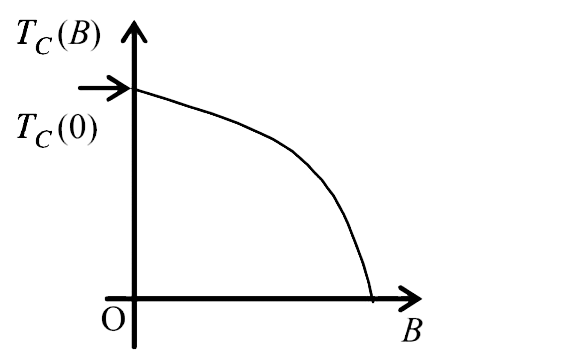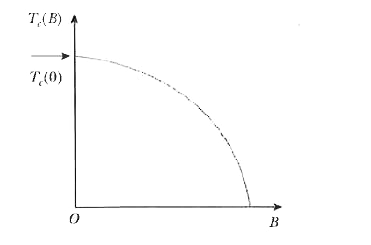Practice Questions (Linked Comprehension) from RESNICK AND HALLIDAY PHYSICS Chapter 6 CURRENT AND RESISTANCE for Class 12
| Class 12 | PHYSICS |
| Chapter | CURRENT AND RESISTANCE |
| RESNICK AND HALLIDAY PHYSICS | Practice Questions (Linked Comprehension) |
| Medium | English |
| Academic Year | 2023-2024 |
Question 1
The alternate discs of iron and carbon, having same area of cross-section are cemented together to make a cylinder whose temperature coefficient of resistivity is zero. The change in temperature in two alternate discs is same. The ratio of their thickness and ratio of heat produced in them is found out. The resistivity of iron and carbon at 20∘C are 1×10−7and3×10−5Ωm and their temperature coefficient of resistance are 5×10−3∘Cand−7.5×10−4∘C, respectively, Thermal expansion is neglected. Here, △R1+△R2=0 (where △R1,and△R2, are the increase in resistances of iron and carbon, respectively, with the rise in temperature) because combined temperature coefficient of resistivity is given as zero.
Ratio of their thickness isView SolutionQuestion 2
The alternate discs of iron and carbon, having same area of cross-section are cemented together to make a cylinder whose temperature coefficient of resistivity is zero. The change in temperature in two alternate discs is same. The ratio of their thickness and ratio of heat produced in them is found out. The resistivity of iron and carbon at 20∘C are 1×10−7and3×10−5Ωm and their temperature coefficient of resistance are 5×10−3∘Cand−7.5×10−4∘C, respectively, Thermal expansion is neglected. Here, △R1+△R2=0 (where △R1,and△R2, are the increase in resistances of iron and carbon, respectively, with the rise in temperature) because combined temperature coefficient of resistivity is given as zero.
Ratio of heat produced in them isView SolutionQuestion 3
The alternate discs of iron and carbon, having same area of cross-section are cemented together to make a cylinder whose temperature coefficient of resistivity is zero. The change in temperature in two alternate discs is same. The ratio of their thickness and ratio of heat produced in them is found out. The resistivity of iron and carbon at 20∘C are 1×10−7and3×10−5Ωm and their temperature coefficient of resistance are 5×10−3∘Cand−7.5×10−4∘C, respectively, Thermal expansion is neglected. Here, △R1+△R2=0 (where △R1,and△R2, are the increase in resistances of iron and carbon, respectively, with the rise in temperature) because combined temperature coefficient of resistivity is given as zero.
A copper wire is stretched to make it 1% longer. The percentage change in its resistance is Electrical resistance of certain materials, known as super conductors changes abruptly from a non zero value to zero as their temperture is lowered below a critical temperature Tc(0) An interesting property of superconductors is that their critical temperature becomes smaller than Tc(0) if they are placed in a magnetic field, that is, the critical temperature Tc(B) is a function of the magnetic field strength B. The dependence of Tc(P) on magnetic field is shown in the below figure. View SolutionQuestion 4
Electrical resistance of certain materials, known as superconductors, changes abruptly from a nonzero value of zero as their temperature is lowered below a critical temperature TC(0). An interesting property of super conductors is that their critical temperature becomes smaller than TC(0) if they are placed in a magnetic field, i.e., the critical temperature TC(B) is a function of the magnetic field strength B. The dependence of TC(B) on B is shown in the figure.
 .
.
In the graphs below, the resistance R of a superconductor is shown as a function of its temperature T for two different magnetic fields B1(solid line) and B2 (dashed line). If B2 is larget than B1 which of the following graphs shows the correct variation of R with T in these fields? View SolutionQuestion 5
Electrical resistance of certain materials, known as superconductors , changes abruptly from a non-zero value to zero as their temperature is lowered below a critical temperature Tc(0) An interesting property of superconductors is that their critical temperature becomes smaller than Tc(0) if they are placed in a magnetic field, that is, the critical temperature Tc(B) is a function of the magnetic field strength B. The dependence of Tc(B) on magnetic field is shown in the below figure .

A superconductor has Tc(0)=100K. When a magnetic field of 7.5T is applied, its Tc decreases to 75K. For this material, one can definetly say that whenView Solution